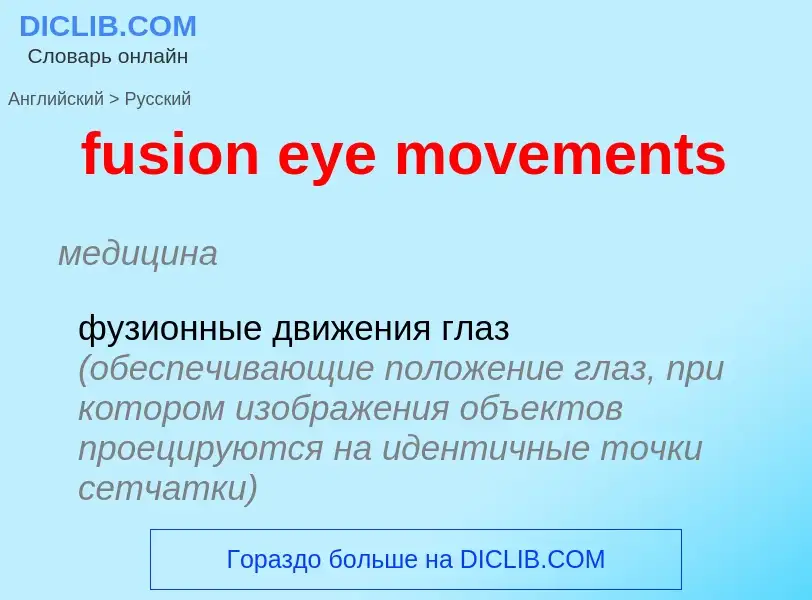Перевод и анализ слов искусственным интеллектом ChatGPT
На этой странице Вы можете получить подробный анализ слова или словосочетания, произведенный с помощью лучшей на сегодняшний день технологии искусственного интеллекта:
- как употребляется слово
- частота употребления
- используется оно чаще в устной или письменной речи
- варианты перевода слова
- примеры употребления (несколько фраз с переводом)
- этимология
fusion eye movements - перевод на русский
медицина
фузионные движения глаз (обеспечивающие положение глаз, при котором изображения объектов проецируются на идентичные точки сетчатки)
медицина
движения глаз
Определение
Википедия
Eye movement in reading involves the visual processing of written text. This was described by the French ophthalmologist Louis Émile Javal in the late 19th century. He reported that eyes do not move continuously along a line of text, but make short, rapid movements (saccades) intermingled with short stops (fixations). Javal's observations were characterised by a reliance on naked-eye observation of eye movement in the absence of technology. From the late 19th to the mid-20th century, investigators used early tracking technologies to assist their observation, in a research climate that emphasised the measurement of human behaviour and skill for educational ends. Most basic knowledge about eye movement was obtained during this period. Since the mid-20th century, there have been three major changes: the development of non-invasive eye-movement tracking equipment; the introduction of computer technology to enhance the power of this equipment to pick up, record, and process the huge volume of data that eye movement generates; and the emergence of cognitive psychology as a theoretical and methodological framework within which reading processes are examined. Sereno & Rayner (2003) believed that the best current approach to discover immediate signs of word recognition is through recordings of eye movement and event-related potential.



